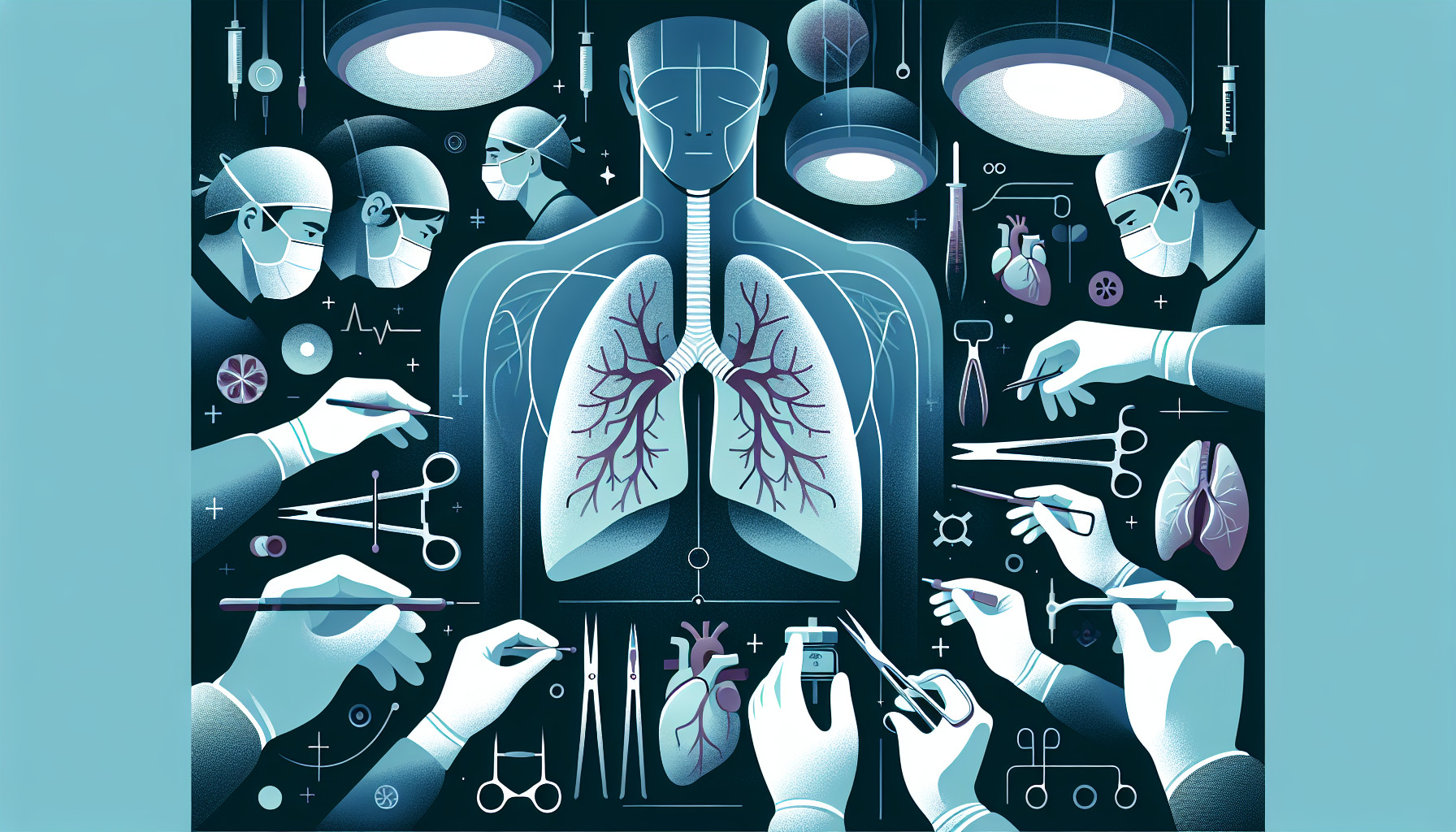Our Summary
Pulmonary arterial hypertension (PAH) is a serious, often deadly disease that causes high blood pressure in the lungs. Although there are some treatments available, they don’t work for everyone. For those where the current treatments don’t work, a lung transplant or sometimes a heart-lung transplant could be an option. This could be a life-saving procedure, but it’s also risky, as there’s a higher chance of dying in the first three months after the transplant compared to other reasons for lung transplants. However, if patients survive this period, their long-term survival chances are very good. This study looks at when lung transplants could be a solution for PAH patients, and when it’s best to list patients for this procedure. It also evaluates the benefits of a double lung transplant versus a heart-lung transplant for these patients, and explores the different types of advanced support for severe PAH. Finally, it discusses the short and long-term outcomes for PAH patients who have received a transplant.
FAQs
- What is Pulmonary arterial hypertension (PAH) and how can a lung transplant help?
- What are the risks associated with a lung transplant for PAH patients?
- Does the study compare the benefits of a double lung transplant versus a heart-lung transplant for PAH patients?
Doctor’s Tip
One helpful tip a doctor might tell a patient considering a lung transplant is to carefully follow their pre and post-transplant care plan. This includes taking all medications as prescribed, attending follow-up appointments, and participating in pulmonary rehabilitation. It’s also important to maintain a healthy lifestyle by eating a well-balanced diet, staying physically active, and avoiding smoking and secondhand smoke. By following these recommendations, patients can increase their chances of a successful transplant and improve their long-term outcomes.
Suitable For
Patients with end-stage lung diseases such as cystic fibrosis, chronic obstructive pulmonary disease (COPD), idiopathic pulmonary fibrosis, and bronchiectasis are also commonly recommended for lung transplant. These patients typically have severe symptoms and limited treatment options, and a lung transplant may be their only chance for improved quality of life and increased survival.
Patients who have failed other medical treatments and have a poor prognosis without a transplant are also candidates for lung transplantation. This includes patients who have severe lung function impairment, frequent exacerbations, and are at high risk of mortality.
Additionally, patients who have complications from their underlying lung disease, such as pulmonary hypertension, respiratory failure, or severe infections, may also be recommended for lung transplant.
Ultimately, the decision to recommend a patient for lung transplant is based on their individual medical history, severity of their condition, overall health, and likelihood of benefiting from the procedure. Transplant evaluation teams carefully assess each patient to determine if they are suitable candidates for a lung transplant and if the potential benefits outweigh the risks.
Timeline
Before lung transplant:
- Patient is diagnosed with pulmonary arterial hypertension (PAH)
- Patient undergoes various treatments such as medications, oxygen therapy, and lifestyle changes
- If these treatments are ineffective, patient may be considered for a lung transplant
- Patient undergoes thorough evaluations and testing to determine if they are a suitable candidate for a transplant
- Patient is listed on the transplant waiting list and waits for a suitable donor organ
After lung transplant:
- Patient undergoes the transplant surgery, which typically takes several hours
- Patient is closely monitored in the intensive care unit (ICU) for the first few days post-transplant
- Patient is gradually weaned off ventilator support and other medications
- Patient begins a rigorous rehabilitation program to regain strength and lung function
- Patient is closely monitored for signs of rejection and infection
- Patient may need to take immunosuppressant medications for the rest of their life to prevent rejection
- With successful recovery, patient can experience improved quality of life and increased life expectancy
Overall, the process before and after a lung transplant can be challenging and life-changing for the patient, but it offers hope for those with severe PAH who have exhausted other treatment options.
What to Ask Your Doctor
Am I a candidate for a lung transplant or heart-lung transplant for my pulmonary arterial hypertension?
What are the risks and benefits of undergoing a lung transplant for my condition?
How long is the waiting period for a lung transplant, and what factors determine how quickly a suitable donor can be found?
What is the success rate of lung transplants for patients with pulmonary arterial hypertension?
How will my quality of life be affected after a lung transplant?
What are the potential complications and side effects of a lung transplant?
What is the recovery process like after a lung transplant, and what kind of ongoing care will I need?
How will I be monitored and supported post-transplant to ensure the best possible outcomes?
Are there alternative treatments or therapies that I should consider before opting for a lung transplant?
What are the long-term survival rates for pulmonary arterial hypertension patients who have undergone a lung transplant?
Reference
Authors: Budev MM, Yun JJ. Journal: Cardiol Clin. 2022 Feb;40(1):129-138. doi: 10.1016/j.ccl.2021.09.001. PMID: 34809913
